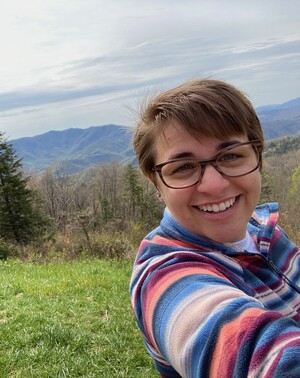April is a time of year when we are greeted by signs of spring after a long winter in the Northern hemisphere. As flowers bloom and wildlife reappears from slumber, it is a great time to partake in citizen science. Citizen science is a global movement that welcomes people from all walks of life to participate in science that matters to them. Each April, scientists, facilitators, and project leads host events and programs to help people discover how they can participate in research from their backyard. Here are some ways to participate this month.
Exploring Biodiversity

Perhaps my favorite way to participate in science is by exploring biodiversity when taking walks. This free and fun activity is as simple as downloading the iNaturalist app or creating an account on a desktop computer. Head out on a walk with family or friends and document wildlife and plants along the way. You can take direct observations in the app, or take photos and note coordinates to upload to the computer when you get home. iNaturalist allows other users to provide input and help identify your observations. In turn, scientists and resource managers can use this data to understand when and where organisms occur. When taking photos for observation, remember to get close-up details like leaf patterns, insect wings, or flower petals. Always respect flora and fauna by leaving them in their natural habitat and maintaining a safe distance between yourself and large animals. For safety, always be on the lookout for poison ivy, bees, or other stinging plants and insects!
iNaturalist also allows for community-based programs. This April, you can join the “Pollinators of Arizona State University” project and help discover and document the pollinator species found on the Arizona State University campuses to aid in pollinator conservation research. Pollinators include insects such as bees and beetles, birds such as hummingbirds, bats such as the Lesser Long-Nosed Bat found in the Sonoran Desert, butterflies, and small mammals. Pollinators provide an important ecosystem service by carrying pollen from flower to flower on their bodies in exchange for a drink of nectar, which helps plants reproduce and bear fruit. One of every three bites of food that you take is provided by pollinators. Their habitat and populations are declining due to factors like climate change, chemical/pesticide usage, and disease. You can help ensure the survival of all living things by helping to monitor populations, establish and revitalize habitats, and take overall conservation actions. To get started, go to “community” from the main dashboard. Then select “projects” and enter “pollinators of Arizona State University'' in the search bar. Join to upload your observations to the project folder.
Measuring Light Pollution

Light pollution is intrusive artificial light, usually caused by outside lights that shine brightly from house exteriors or parking lots and roadways. Too much light pollution can wash out starlight in the sky, interfere with astronomical research, disrupt ecosystems, have adverse health effects, and waste energy. Get started at Globe at Night to begin documenting what the night sky looks like from your house. This citizen science project helps scientists understand the impacts of light pollution. See if your local library or astronomy club has a sky quality meter (SQM) for loan. Using the SQM and looking at the sky, you can fill in this worksheet from SciStarter, or enter data directly into Globe at Night.
Learn more about citizen science events in your community by visiting: scistarter.org or your local library. Looking to start your own citizen science project? Check out these books:
- The Field Guide to Citizen Science, available from the ASU Library
- Citizen Science: How Ordinary People are Changing the Face of Discovery, available from the ASU Library.
Learn more about how to get involved at our citizen science library guide.
